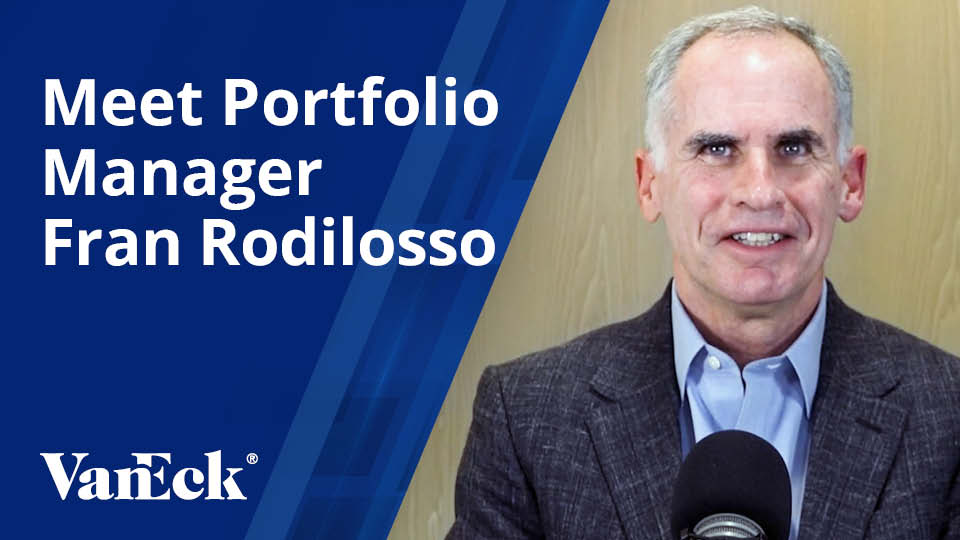Smarter Approaches to Corporate Credit
January 29, 2021
Read Time 2 MIN
Undervalued bonds which provide excess spread relative to their fair value may be a source of outperformance versus the broad market in credit investing, thanks to their upside potential. However, this does not simply mean buying the highest yielding bonds. Yields and spreads imply risk, and investment grade bond investors who do not accurately evaluate the risk of their holdings may be assuming significant default or downgrade risk. Even a small exposure to poorly performing credits within a portfolio can erase any outperformance versus the benchmark and put an investor in the red.
Today’s prolonged low rates and tight credit spreads are pushing many investment grade bond investors further out on the risk curve. Because investment grade corporate bonds are considered a “core” fixed income asset class, meant to provide both income and safety, taking on too much risk may backfire in a negative credit environment. We believe that by focusing on bonds that are attractively valued relative to their embedded risks, investors do not need to sacrifice income or assume additional risk without adequate compensation. Our approach to the investment grade market seeks out bonds that have a high market spread (measured by their option adjusted spread) relative to “fair value,” which is the spread that is needed to compensate an investor for the embedded credit risk of a bond.
Determining fair value requires investors to look beyond traditional measures of risk such as duration or absolute spread levels. It also means that credit ratings alone cannot be used to quantify value. Credit ratings provide useful information around the relative creditworthiness of a specific rating category relative to others within the same asset class, but can’t provide investors with a forward-looking absolute assessment of credit risk. They are also not granular enough to use as a basis for security selection, given the huge diversity within even a single rating category.
So how does one decide if a bond represents attractive value? Our approach selects bonds with the highest excess spread relative to their fair value, which itself represents an assessment of a bond’s risk. Our selection process, detailed in this paper, incorporates not only screening for default risk, but also downgrade risk (the risk of an investment grade bond being downgraded to high yield). A high market spread relative to fair value represents upside potential, as one would expect market spreads to converge to fair value over time. This can be viewed as a relative value opportunity since bonds are priced cheaply relative to the risk they represent, or alternatively it can be described as a market mispricing of risk, provided that the model used to assess risk is accurate.
Related Insights
Fallen angels outperformed broad high yield by 0.24% in March and 0.10% YTD, due in part, to tighter spreads. Q1 2024 saw two fallen angels and two rising stars.
April 17, 2024
April 10, 2024
April 09, 2024
March 22, 2024
DISCLOSURES
Please note that VanEck may offer investments products that invest in the asset class(es) or industries included herein.
The views and opinions expressed are those of the author(s) but not necessarily those of VanEck. Commentaries are general in nature and should not be construed as investment advice. Certain statements contained herein may constitute projections, forecasts and other forward looking statements, which do not reflect actual results, are valid as of the date of this communication and subject to change without notice. Information provided by third party sources are believed to be reliable and have not been independently verified for accuracy or completeness and cannot be guaranteed. Any discussion of specific securities/financial instruments mentioned in the commentary is neither an offer to sell nor a solicitation to buy these securities. Fund holdings will vary. All indices mentioned are measures of common market sectors and performance. It is not possible to invest directly in an index. Information on holdings, performance and indices can be found at vaneck.com.
All investing is subject to risk, including the possible loss of the money you invest. As with any investment strategy, there is no guarantee that investment objectives will be met and investors may lose money. Diversification does not ensure a profit or protect against a loss in a declining market. Past performance is no guarantee of future performance.
Related Funds
DISCLOSURES
Please note that VanEck may offer investments products that invest in the asset class(es) or industries included herein.
The views and opinions expressed are those of the author(s) but not necessarily those of VanEck. Commentaries are general in nature and should not be construed as investment advice. Certain statements contained herein may constitute projections, forecasts and other forward looking statements, which do not reflect actual results, are valid as of the date of this communication and subject to change without notice. Information provided by third party sources are believed to be reliable and have not been independently verified for accuracy or completeness and cannot be guaranteed. Any discussion of specific securities/financial instruments mentioned in the commentary is neither an offer to sell nor a solicitation to buy these securities. Fund holdings will vary. All indices mentioned are measures of common market sectors and performance. It is not possible to invest directly in an index. Information on holdings, performance and indices can be found at vaneck.com.
All investing is subject to risk, including the possible loss of the money you invest. As with any investment strategy, there is no guarantee that investment objectives will be met and investors may lose money. Diversification does not ensure a profit or protect against a loss in a declining market. Past performance is no guarantee of future performance.
